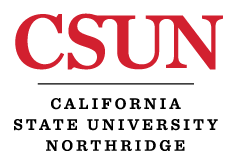Program: B.S., Mathematics
Statistics
Program Description
The B.S. degree in Mathematics is designed for students who want to pursue occupational careers involving applied mathematics or want to prepare for graduate work in applied mathematics.
Double Major
A student pursuing either a B.A. or a B.S. degree may combine a second major with Mathematics. In this circumstance, upon approval of an advisor, 6 units of upper division electives may be satisfied by courses in the second major. The remaining electives must be taken in the Department of Mathematics. Under certain rare conditions, the physics requirement in the lower division core may be replaced by appropriate coursework in the second major. Prior approval must be obtained from an advisor and the department chair for this latter occurrence.
Program Requirements
Requirements
In addition to University residence requirements for a bachelor’s degree, the student must complete a minimum of 18 units of upper division Mathematics in residence at CSUN with the approval of a Mathematics advisor. Students in B.A. degree programs must fulfill the University requirement of at least 40 units of upper division coursework overall.
It is assumed that the student has a facility in mathematics normally gained by recent completion of four years of high school mathematics through trigonometry and “Mathematical Analysis.” Because of the variation in curricula at the high school level, it is necessary to obtain satisfactory scores on the Mathematics Placement Test (MPT) and Entry Level Mathematics Exam (ELM)* to enter the first mathematics course in the program, MATH 150A. Without satisfactory scores, a student will need to complete additional coursework.
*Effective Fall 2018, the ELM Exam has been replaced with Multiple Measures Assessment.
1. Lower Division Core for All Programs (23-24 units)
COMP 106/L Computing in Engineering and Science and Lab (2/1)
or COMP 110/L Introduction to Algorithms and Programming and Lab (3/1)
The student must complete the lower division core and one of the Mathematics options, and he or she must have at least a 2.0 GPA for all upper division units required in the major.
2. Upper Division Required Courses (30 units)
MATH 320 Foundations of Higher Mathematics (3)
MATH 340 Introductory Probability (3)
MATH 351 Differential Equations (3)
MATH 382/L Introduction to Scientific Computing and Lab (2/1)
MATH 440A Mathematical Statistics I (3)
MATH 440B Mathematical Statistics II (3)
MATH 450A Advanced Calculus I (3)
MATH 462 Advanced Linear Algebra (3)
MATH 483 Mathematical Modeling (3)
MATH 494 Practical Experience in Mathematics (3)
3. Upper Division Electives (9 units)
Choose 9 units from among (1) all upper division Math courses (excluding MATH 310, 310L, 311, 312, 331, 391 and 490); and (2) approved courses in other departments. At least 3 units must be in Mathematics. Recommended courses: COMP 431 or COMP 465; FIN 303, FIN 431 or FIN 434; ECON 409; MATH 366, MATH 442, MATH 450B, MATH 480, MATH 481A, MATH 481B, MATH 481C, MATH 481D, MATH 482, MATH 540 or MATH 542ABCD; MKT 346; PSY 420; SOM 409, SOM 467 or SOM 591.
All classes taken outside the Mathematics department must have the approval of an advisor prior to enrollment, and students must either meet prerequisites or obtain permission of instructor.
Note: Early completion of MATH 340 and MATH 440A is recommended. Courses outside the Mathematics department are encouraged.
4. General Education (48 units)
Undergraduate students must complete 48 units of General Education as described in this Catalog.
Basic Skills Mathematics and Lifelong Learning are satisfied by required courses in the major. PHYS 220A/AL partially satisfies the Natural Sciences section.
Total Units in the Major/Option: 62-63
General Education Units: 38
Additional Units: 19-20
Total Units Required for the B.S. Degree: 120
Contact
Department of Mathematics
Chair: Rabia Djellouli
Live Oak Hall (LO) 1300
(818) 677-2721
Student Learning Outcomes
Students shall be able to:
- Devise proofs of basic results concerning sets and number systems.
- Rigorously establish fundamental analytic properties and results such as limits, continuity, differentiability and integrability.
- Demonstrate facility with the objects, terminology, and concepts of linear algebra.
- Demonstrate facility with the terminology, use of symbols, and concepts of probability.
- Write simple computer programs to perform computations arising in the mathematical sciences.




